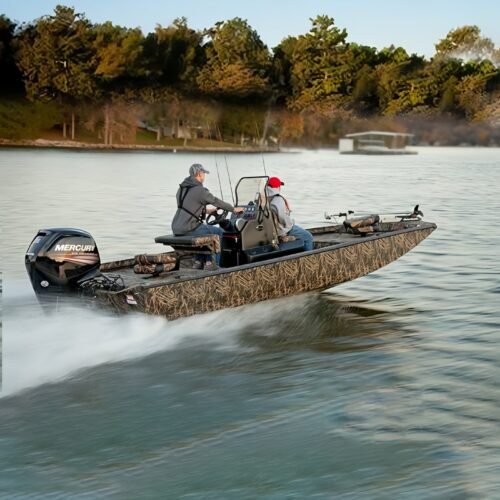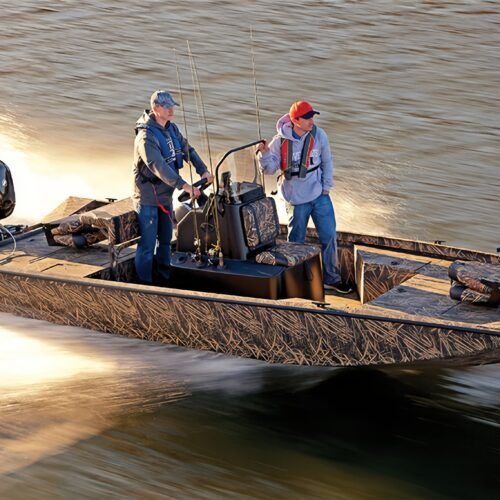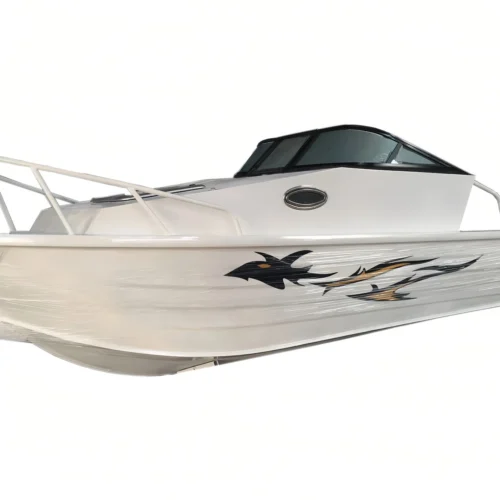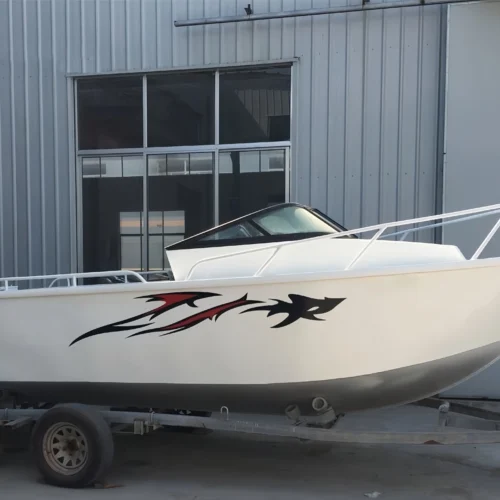Bay Boat FAQs
1. What is a bay boat?
Compared with the common freshwater boats, bay boats have some ability to handle salt water. With a wide and flat bottom, the bay boat is able to provide more comfort to the user.
With comfortable seats and complete fishing equipment, the bay' boat is used for various recreational activities. And the moderate V-shaped hull and shallow draft make the shallow waters such as coastal bays, estuaries and marshes the best place for bay' boats to parade.
Overall, a bay boat is a versatile vessel capable of handling more types of water and engaging in more water activities.
2. What is a bay boat used for?
The bay boat is a good choice for those who want a versatile boat that can cruise, sightsee and fish in coastal waters as well as engage in a variety of water sports in the deep waters of inland lakes.
With the scientific angle of hull tilt, the bay boat is able to maintain maximum stability in rough waters.
As a result, the protected bay has also become a tourist attraction. The spacious deck allows the bay boat to store more comfortable seating and water sports equipment, which means that people can follow the bay boat to go in pursuit of saltwater fish along the sea. In fact, many people do so.
They install livewells, rod holders, fish finders and trolling motors on their bay boats to facilitate fishing in shallow bays.
3. Are bay boats good for fishing?
Yes, the most use of bay boats as multipurpose type boats is to go fishing along the sea. Because for the ordinary people, the offshore boat is more equipped but the price is also higher.
The bay boat has the function of going to the sea along with cheaper price, and it also supports many fishing equipment such as livewell, fishing rod and fish finder.
With its flat, spacious deck and center console design, the Bay boat provides plenty of space for anglers to cast, pull and other sports. The stable hull makes fishing on the water and on the flat as easy and secure.
What's more, the bay boat can not only go to the stranded beaches but also support free movement in the deep waters of inland lakes and rivers.
Therefore, whether it is common freshwater fish or saltwater fish that are not easily available, the bay boat will support anglers to conquer them.
4. How much is a bay boat?
Based on the all-purpose nature of bay boats, the price of a new boat is usually easily over $20,000 as well. Even for smaller, simpler models, such an entrance fee, is common.
More than not, those high-end models come along with more advanced technology and equipment.
If you are on a budget and are also looking for a versatile bay boat, then a used bay boat means savings on the cost price. They will usually range in price from $10,000 to $20,000.
However, there can be certain problems with used bay boats, for they tend to require higher maintenance costs and lower resale values.
Of course, you can also choose the more affordable and better performing NeoBoats. we offer various types of bay boats to suit your various travel tasks. If needed, you can go back to the top of this page and pick your boat.
5. How long are bay boats?
The vast majority of bay boats are kept to about 18-24 feet in size, as this is large enough for water sports enthusiasts to cruise, fish or play sports. They can remain stable in shallow waters such as bays and estuaries or deep waters such as lakes.
Of course, we do not exclude larger size bay boats. Boats like those over 30 feet have more stability than regular bay boats and can also sail cautiously in rough open water.
6. How much does a bay boat weigh?
According to our research, we found that the average weight of a common bay boat on the market today would be around 2,500 pounds. Of course, this is together with the result of equipment and engine.
If these additional weights are removed, then an 18-foot bay boat may weigh around 1,500 to 2,000 pounds. A 22-foot medium-sized bay boat, on the other hand, will increase in weight to 2,500 to 3,000 pounds.
As the size increases, larger sized boats, too, gain weight. 24-foot bay boats can easily weigh more than 3,000 pounds.
Of course, we don't need to worry about their weight because all bay boats will support custom trailers. With the help of trailers, it can be convenient and easy to transport, use or store the boats.
7. Can the Bay boat handle rough waters?
Bay boat, as the name implies, is for shallow waters such as bays and estuaries. With the feature of flat bottom and shallow draft, it can perform well in all shallow waters. Of course, deep waters of inland lakes and rivers are also the areas where bay boats excel.
And what will they do in the face of rough waters? Compared with small flat bottom boats, bay boats are significantly more capable of handling rough water. A V-shaped hull design allows them to cut through large waves more easily, at least more reliably than our common bass boats.
Of course, the bay boat's ability to handle rough water is also limited, once too far offshore or in bad weather, the bay boat is also likely to be overturned by the wind and waves.
8. Can a bay boat go offshore?
From the setup and technical aspects of bay boats, they are supported to sail out to sea, but only in offshore waters. Based on the shallow draft setting of bay boats, they cannot maintain stability for a long time in the sea with uncontrollable wind and waves.
Because, bay boats are not very good at open sea waters. Because the water condition there is full of too many dangers. Especially for small size and light weight bay boats, the rough sea water is very risky.
The limited storage space of a small bay boat allows it to carry extremely limited fuel and sailing equipment. The flat-bottom, shallow-draft hull is also very limited in its ability to cut through the water.
Of course, not all bay boats are incapable of handling the waves. Those larger and more fully equipped deep V-bay boats have the ability to fight rough seas. Therefore, it is also advisable to drive luxury bay boats along the coastline with caution.
However, we do not recommend the crew to drive the bay boat to the open sea, because in the open sea, the boat needs more power to cope with the high wind and waves.
Once the boat runs out of fuel, it can only drift with the wind and may be overturned by the wind and waves at any time, which is very dangerous.
9. How far can a bay boat go offshore?
While the Bay boat is capable of supporting cautious offshore driving, its offshore range remains limited by the size of the vessel, fuel capacity, speed, and sea conditions.
Generally speaking, bay boats can comfortably handle 2-3 foot waves. Therefore, on calm days, it is safer to drive a bay boat to a range of 20 km from the coastline.
Of course, this is based on the fuel capacity of the boat being able to support the round trip. Also, we should take into account the additional fuel capacity needed to cope with wind and waves in case of sudden changes in weather or water conditions.
It is also important to ensure that the vessel carries adequate safety equipment before moving away from the shore, just in case.
Therefore, we do not recommend sailing a bay boat to the high seas unless there is sufficient certainty.
10. What is the difference between a bay boat and an offshore boat?
Bay boats, as a compromise between offshore boats and small flat bottom boats, are more often utilized for cruising and fishing along the sea and bay. It has a greater ability to handle waves than common small flat-bottom boats.
However, the limited size and storage capacity limits its footprint to short trips and does not support long-distance expeditions.
Offshore boats, on the other hand, are larger models that carry more sailing equipment to handle greater winds and waves by increasing their length and weight.
More adequate equipment also gives offshore boats the ability to sail for miles out to sea and stay safe. For longer trips, more luxurious and comfortable seating and shade equipment are also necessary.
With more spacious decks and weight, offshore vessels are able to store more conveniences and support the ability to accommodate more passengers.
In general, bay boats are smaller and cheaper, and more suitable for shallow waters such as bays and estuaries.
While offshore boats are larger and better equipped to support long trips away from the coastline for miles.






